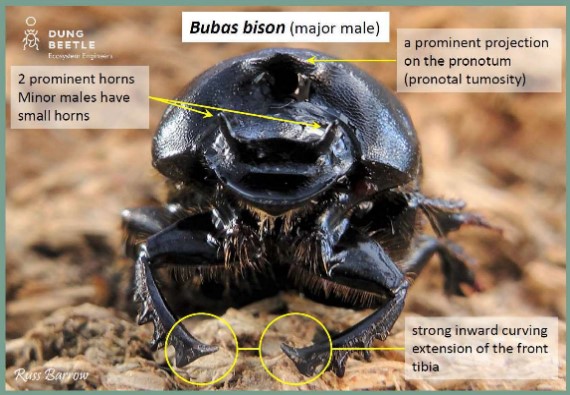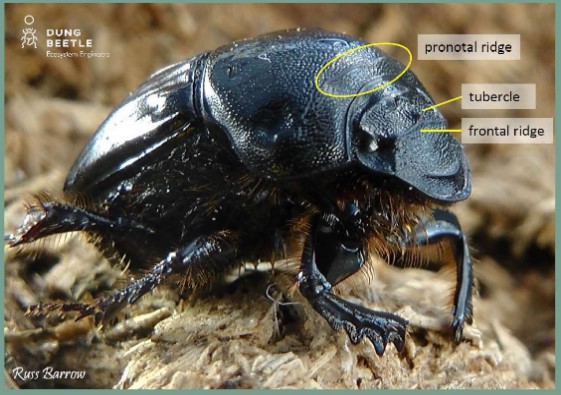Bubas bison (introduced)
Download a PDF version of this page: Bubas Bison (introduced) ![]() [PDF File - 789.5 KB]
[PDF File - 789.5 KB]




Colour
Shiny black
Horns
Horn on each side of head and a projection on pronotum (m); ridge on head between eyes and on pronotum (f)
Minor males
Smaller horn on each side of head but not on pronotum
Flight time
Dawn and dusk
Active seasons
Autumn, winter and early spring
Distribution in Australia
Victoria, WA, SA, southern NSW
South West Prime Lamb Group (SWPLG) demonstrations
Very small numbers of B. bison have been trapped in SWPLG traps around Hamilton and Narrawong over winter. B. bison has been used in SWPLG trials where its activity increased soil fertility to depth. Its winter activity and deep tunnelling make it a desirable species.
Lifecycle
B. bison can have a one-, two- or three-year life cycle. Adults emerge in late autumn. They feed and mate in shallow tunnels (5–10cm deep) beneath dung pads, then lay eggs in brood masses in deep tunnels (25–60 cm deep). During the life of an adult beetle, a series of dung pads are colonised in which up to 50 eggs are deposited before the beetle dies, usually in late spring.
Dung burial
As B. bison tunnel into the subsoil, they bury dung deep in the soil profile and bring subsoil to the surface. The deep tunnels allow movement of moisture and plant roots into the subsoil, where beetle activity raises the levels of nutrients and moisture and creates favourable conditions for plant roots.
Preferences and establishment of B. bison
Beetles can be introduced as starter colonies. However, if they fail to breed successfully, the reason why needs to be determined. Soil type appears to be critical for successful breeding. Beetles prosper in clay and loamy soils but not in deep sand. Waterlogged winter soils can be tolerated by B. bison in most circumstances, but irrigation in spring and summer can reduce survival.
Acknowledgements and references
- Photos by Russ Barrow, Dung Beetle Ecosystem Engineer (DBEE) Project
- Dung Beetle Ecosystem Engineer website
- Records of B. bison distribution Atlas of Living Australia